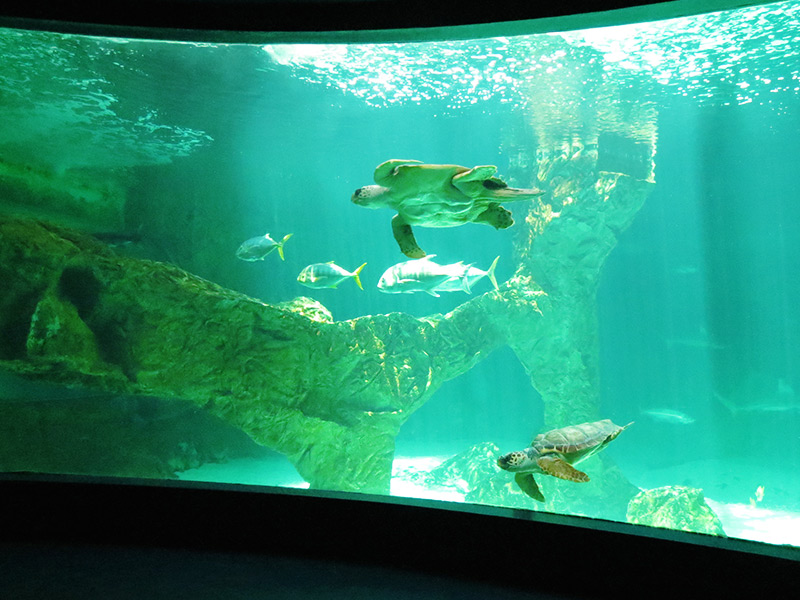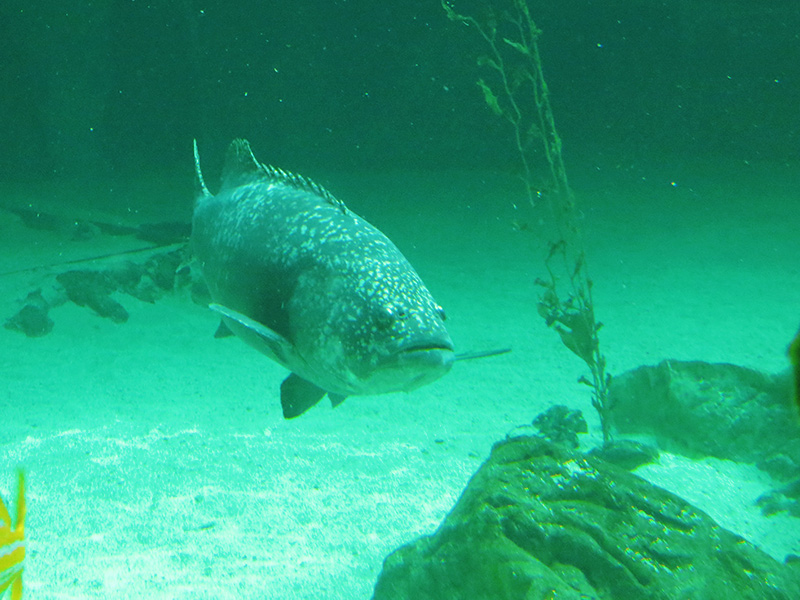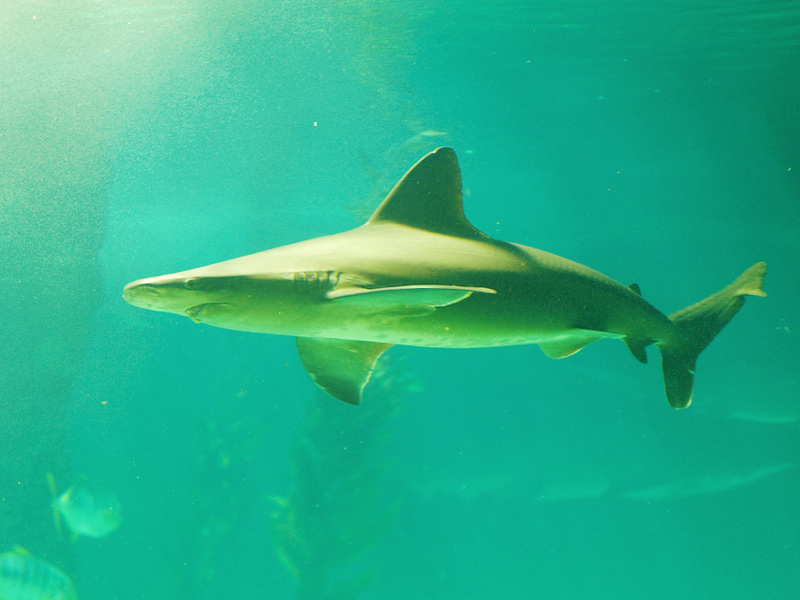Become a Zoollower, now with 3x2 for the first members. Find out here!
Spain’s first tropical marine aquarium opened at Madrid Zoo back in 1995. This was a key in relation to the exhibition and dissemination of knowledge about animal diversity in our country; it also meant a major change in our institution, which was renamed Madrid Zoo Aquarium. The installation, which includes more than thirty aquariums, contributed greatly to enrich the zoological contents of the enclosure, which would be completed with spaces such as the Aviary. The aquarium has an interesting pyramidal glass structure, perfectly visible from other areas of the park, and consists of two floors occupying a total of 2,000 square meters. Two spectacular large tunnels extend for 18 meters before the eyes of visitors as soon as they enter the pavilion.


The diversity of the species that live in the Madrid Aquarium helps the general public discover exotic animals who would otherwise be ‘anonymous’. It happens with the Mule Pipefish, which arrived here to share a home with a close relative, the Mediterranean Seahorse , and is an expert in camouflaging itself among the underwater vegetation. Hawksbill turtles, and the very long-lived Green turtle from Central America and the Caribbean, can all be seen in the aquarium. You will also see super-sized fish like the Giant Grouper, an Asian specimen that is currently in a vulnerable situation.
The Aquarium takes you on a complete journey to the depths of the world's oceans, with a mandatory stop at the coral reef. Sandy seabeds, underwater meadows and even caves show some of the mysteries of life at the bottom of the ocean. Up to 330 species, mainly fish and marine invertebrates, coexist in the aquatic pyramid. You can book your tickets online in advance to enjoy Madrid Zoo Aquarium in full and also get discounts on the set menus around the park.
Perhaps no animal fascinates and terrifies humans as much as the shark. The aquarium therefore has a shark tank for the delight of the public, including Gray Reef Sharks (whose first pups in captivity were born in 2002, inside our facility). Like other sharks, it lacks a swim bladder, but is capable of swallowing air and filling its stomach as a hydrostatic organ for buoyancy and balance. Other species that can be seen in the aquarium are the yellow-tailed butterfly fish, the razor fish, the clown fish, the spotted ray and the royal grandmother fish.
The institution participates in animal conservation projects, such as European Shark Week, which has been held since 2007; and in campaigns such as "Don't let them ravage the deep sea", promoted by the Deep Sea Conservation Coalition and Pew Charitable Trusts, which aims to protect marine biodiversity from aggressive deep-sea fishing.

Come to Zoo from
€28.50
€19.90